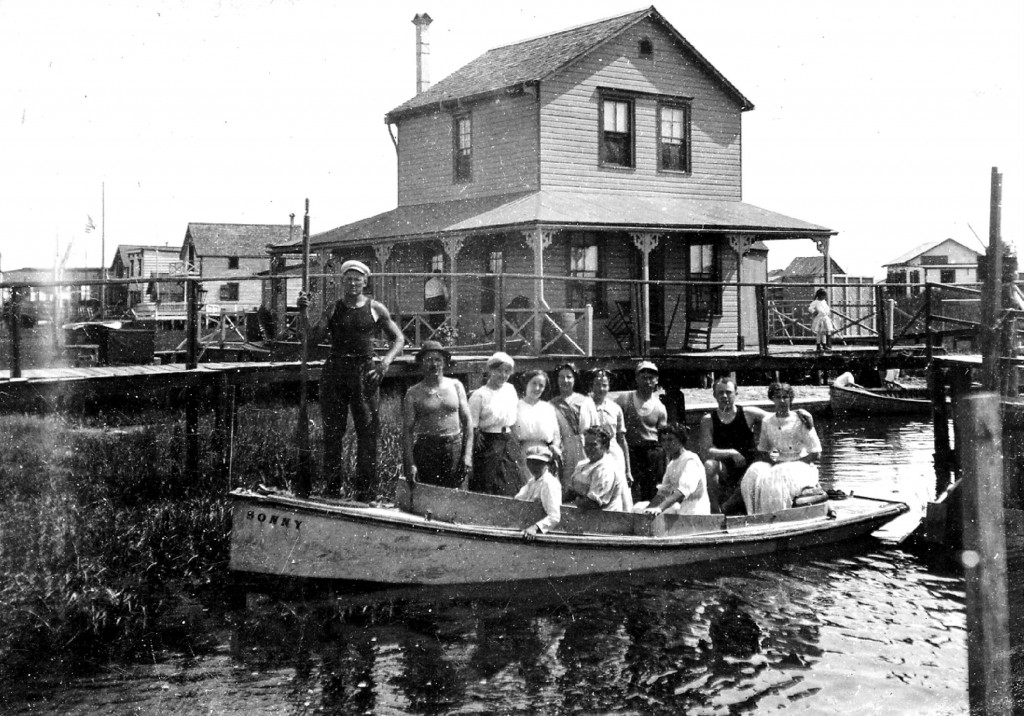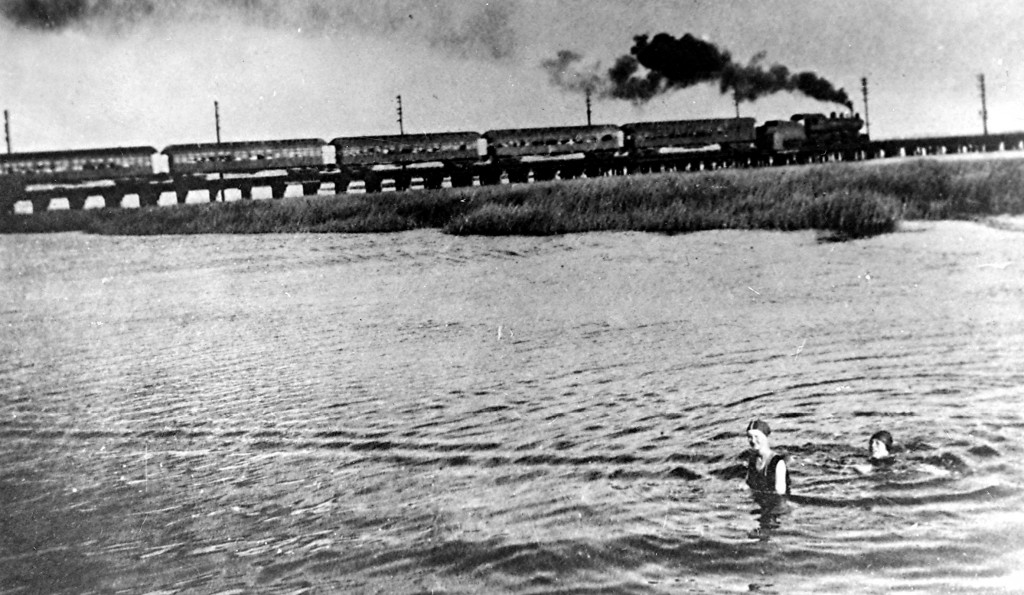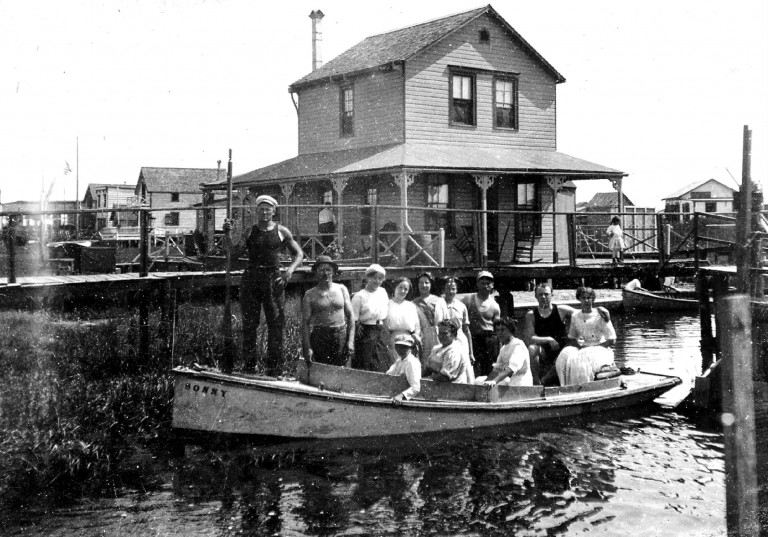
In the early 1900s, when this photo was taken, Broad Channel sported quite a few hotels, all on stilts and connected by boardwalks. The boat in the photograph, named Sonny, carries what are probably hotel guests on an outing in the water round the island. Guarino noted this is one of his favorite photographs because “that man standing on the prow looks an awful lot like Popeye.” Photo courtesy of Jean Bohne Ryan and the Broad Channel Historical Society.
For Dan Guarino, a 25-year resident of Broad Channel – “a newcomer,” he calls himself – there is no place like his home, a neighborhood that measures about 20 blocks long and four blocks wide and which is steeped in a rich history filled with stories of everything from Prohibition raids to residents giving their all to friends and family following the devastation wrought by Hurricane Sandy.
“It’s a place you really won’t find anywhere else,” said Guarino, who, along with wearing a number of civic hats in Broad Channel is an associate editor at the Rockaway newspaper The Wave. “There’s something about the place, about the people there. It’s best described as a small town, and the history is so rich and has so many surprises.”
Guarino and his late wife, Liz Guarino, explored their home’s history in the 2008 book “Images of America: Broad Channel,” and the author has now gotten a chance to delve even deeper into the tightly-knit community situated between Howard Beach and the Rockaway peninsula. He is currently working with the Broad Channel Historical Society on a book, “Broad Channel: Through Time,” which will publish historical photos of the neighborhood partnered with images of the locations as they stand now. It is expected to be published around one year from now, in April 2015.
After having penned the Images book, Guarino already has a good sense as to what older photos of Broad Channel exist – his previous tome included nearly 200 vintage pictures from a wide range of sources, including the U.S. Library of Congress, the Queens Library, the Metropolitan Transportation Authority, and even NASA.
Now, Guarino and members of the historical society, including the group’s president, Barbara Toborg, are deciding which photos they hope to showcase in the newest book that will give people a sense of the neighborhood’s past and present. For many, the drastic change in place is something that has stemmed not only from the natural progression of time but from Hurricane Sandy.
“Hurricane Sandy covered almost every part of Broad Channel with several feet of water – every house, every home, every building was affected by it,” Guarino said. “I went out with my camera after it, and I thought, ‘This is part of our history now too.”
Once a neighborhood filled with summer bungalows, Broad Channel has a long and colorful history that Guarino noted includes being one of the area’s hottest drinking spots during Prohibition because of its relative isolation.
“Broad Channel during Prohibition – it was a rumrunner’s paradise,” he said. “It’s completely surrounded by water. Until the mid-1920s there were no bridges. You could only get there by train or by boat.”
While the neighborhood has certainly changed over the years, Guarino said there is a common thread tying it all together: A sense of community.
“Going back, you begin to find it was always a close-knit community,” he said. “It was always neighbor helping neighbor. There are three, maybe four, times when the city tried to push the community off the island, but they stuck together and we’re still here. Broad Channel sticks together.”
This, he noted, was particularly apparent during and after Hurricane Sandy, when government agencies seemed to have essentially abandoned the neighborhood and residents were the ones taking care of one another.
While Guarino is putting together the new book, he is accepting photos and other historical memorabilia related to Broad Channel.
“The more information that comes in, the better – the fuller the story is,” he said.
Individuals may contact Guarino and the Broad Channel Historical Society through the group’s website, www.

Just off Broad Channel, a Long Island Rail Road train heads towards Rockaway while two women go for a swim. Powered then by a coal burning locomotive, it crosses Jamaica Bay along the same route the A subway train takes today. The photo is from 1914. Photo courtesy of The Queens Borough Public Library, Long Island Division, Rugen Photos.
By Anna Gustafson

